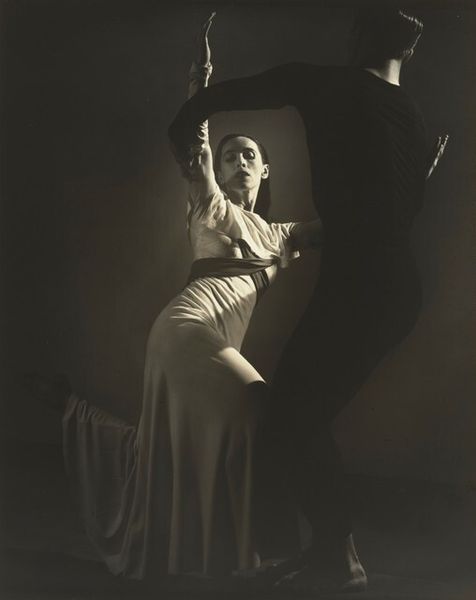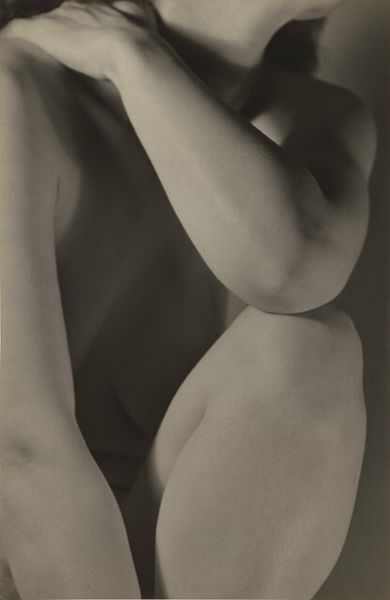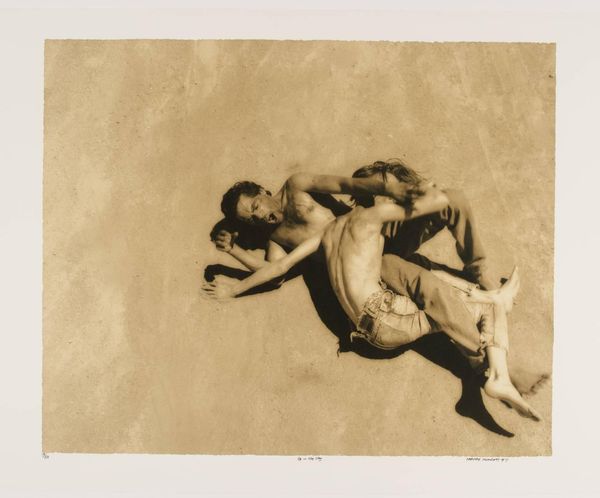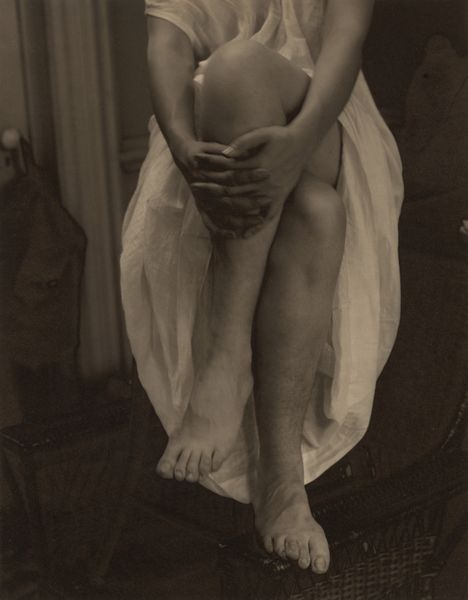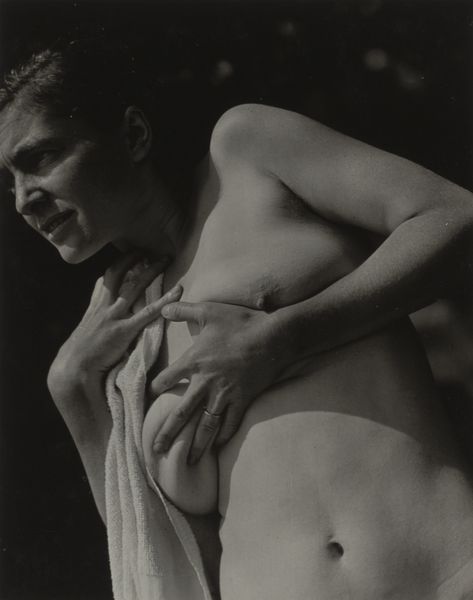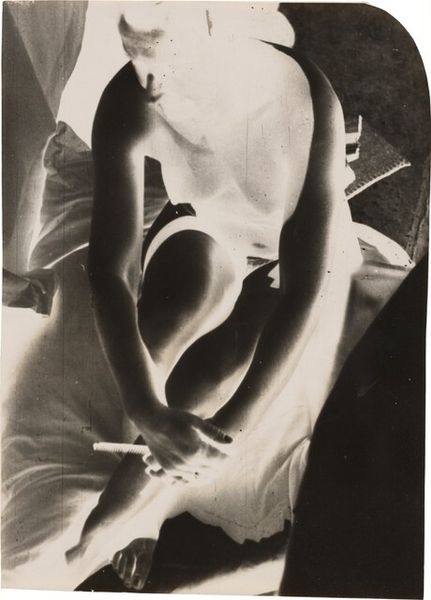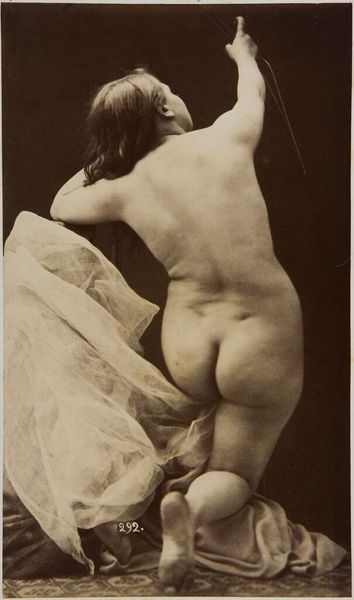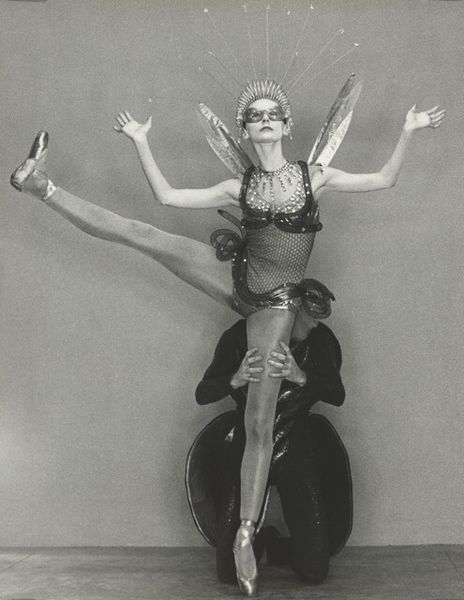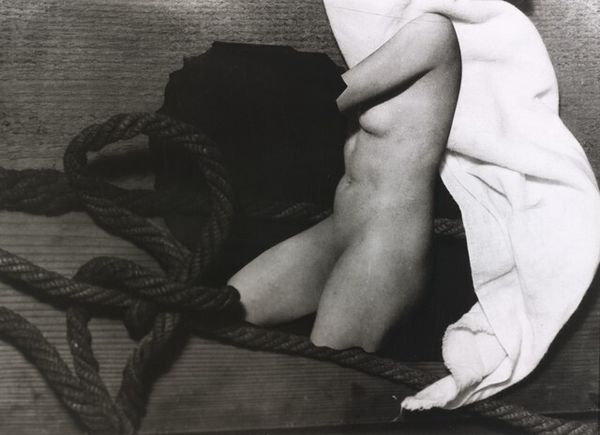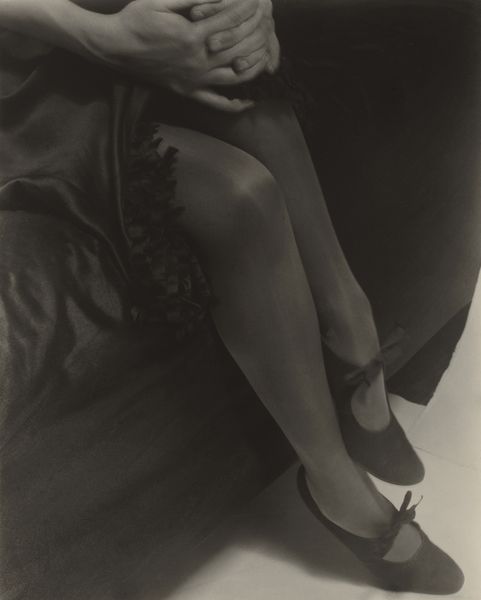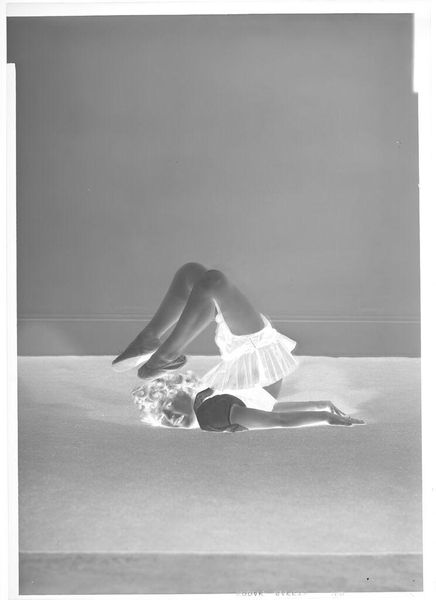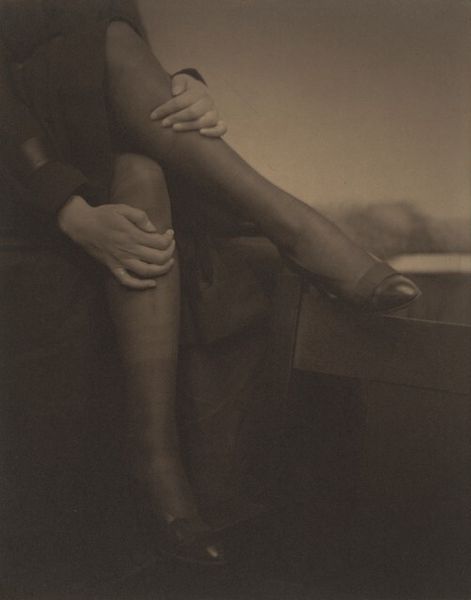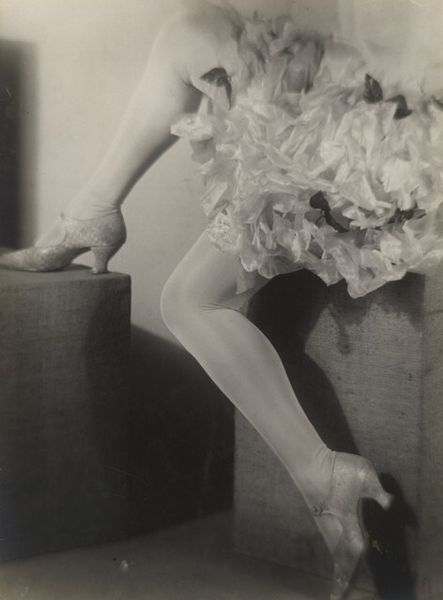
photography, gelatin-silver-print
#
photography
#
gelatin-silver-print
#
monochrome photography
#
surrealism
#
nude
#
surrealism
#
monochrome
Dimensions: image/sheet: 24.1 × 18.8 cm (9 1/2 × 7 3/8 in.)
Copyright: National Gallery of Art: CC0 1.0
Curator: Editor: This is George Platt Lynes’s gelatin-silver print, "Errante," created around 1935. It has such a dreamy quality. It almost feels like two figures are merging together. What strikes you about it? Curator: Immediately, I see Lynes’ engagement with the means of production. Think about gelatin silver printing – its role in democratizing photography and image making. We're looking at reproducibility here, an attempt to challenge the unique art object by embracing techniques that could, in theory, create endless copies. What does that signify in terms of accessing art, distributing desire, and breaking down elitism? Editor: That's interesting. So, the very process is part of the message? But doesn't the surrealist style add another layer, making it less accessible perhaps? Curator: The surrealism is a specific engagement with material and making, and the societal conditions of image making, post-WWI. What were the ways materials—film, chemicals, darkroom practices—enabled dreamlike visions? Surrealism gave artists permission to experiment. In doing so, it challenged assumptions about labour, consumption, and the purpose of art. Was it meant to inspire a bourgeois collector, or infiltrate the world and spark revolution? Editor: I never thought about it that way, as if surrealism itself could be a commentary on consumer culture or labor. Curator: Absolutely. What we are seeing isn't merely bodies, but the material and labor which were employed in manipulating light and chemicals to capture those bodies on photosensitive paper. So, can a photograph, often seen as objective, truly break from capitalist undertones? Editor: Wow, this perspective is really fascinating. It challenges how I normally consider the content, to really thinking about what and how something is being presented to me and its value. Thanks! Curator: Precisely! Examining the artist's choices is crucial to deconstructing how artworks obtain and wield power.
Comments
No comments
Be the first to comment and join the conversation on the ultimate creative platform.
